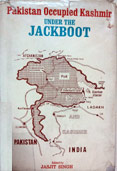Gilgit Baltistan: Province, No Province?
Chinese stakes in Gilgit Baltistan could propel Pakistan to introduce a stop gap provincial arrangement that would contain popular resistance, promote greater stability, and deflate India’s objections to CPEC.
- Priyanka Singh
- August 27, 2015









